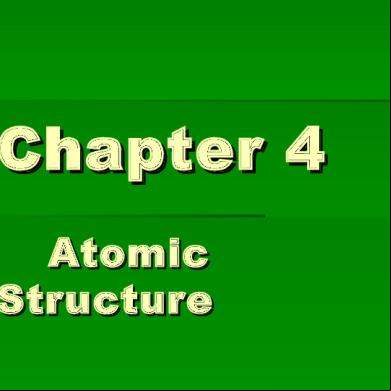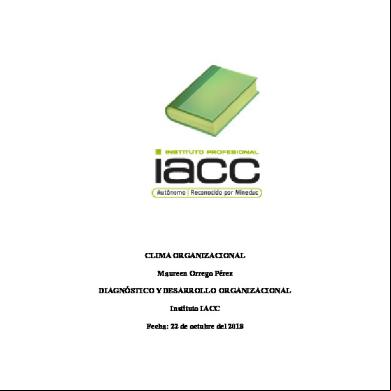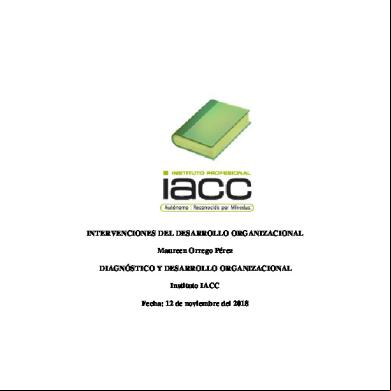Atomic Structure 5j6b41
This document was ed by and they confirmed that they have the permission to share it. If you are author or own the copyright of this book, please report to us by using this report form. Report 2z6p3t
Overview 5o1f4z
& View Atomic Structure as PDF for free.
More details 6z3438
- Words: 928
- Pages: 29
Chapter 4 Atomic Structure
Defining the Atom All elements are composed of particles called atoms All atoms of the same element are identical Atoms of different elements combine to form compounds Atoms of one element can never be changed into another element
History of the Atom Democritus (Greek 460-370 BC) • 1st to use the word atom • Believed that atoms were indivisible & indestructible • No scientific
Aristotle (Greek 384-322 BC) • Rejected the theory of atoms • Believed in 4 core elements fire, air, water, earth
Antoine Lavoisier (French 1743-1794) • Law of Conservation of Matter – Matter is not created or destroyed during a chemical reaction
Joseph Proust (French 1754-1826) • Law of Definite Proportions A compound is always composed of the same elements, in the same proportion by mass
John Dalton (English 1766-1844) • Studied the ratio in which elements combine • Quantitative data – mass • Law of Multiple Proportions When 2 elements form more than one compound, they do so in a ratio of whole numbers
Dalton’s Atomic Theory 1. All elements are composed of indivisible ‘solid sphere’ atoms. 2. All atoms of a given element are identical. 3. Atoms of different elements differ in their masses. 4. Different atoms combine in simple whole number ratios to form compounds.
Structure of the Atom
Subatomic Particles Today… Dalton’s Atomic Theory has one important change Atoms are divisible… 3 types of subatomic particles • Protons • Neutrons • Electrons
Electrons J.J. Thomson (English 1897) – • Identified the 1st subatomic particle • Cathode-ray tube
Thomson’s Electron Model Named electrons Symbol: eCharge: (-1) Mass: ~ 0 amu Plum Pudding/ Chocolate Chip Cookie
What about the protons & neutrons? Protons • Symbol: p+ • Charge: (+1) • Mass: 1 amu Neutons • Symbol: n0 • Charge: (0) neutral • Mass: 1 amu
The Nucleus Ernest Rutherford (English 1911) • Discovered the ‘structure’ of the atom • Gold foil experiment Rutherford’s Gold Foil Experiment
Rutherford’s Nuclear Model Atom is mostly empty space Atoms have a dense center – nucleus Most of the mass is in the nucleus Nucleus has a positive charge Protons & neutrons are located in the nucleus Electrons are outside of the nucleus & occupy most of the atom’s volume
Distinguishing Among Atoms
What makes atoms different from one another?
# of protons Atomic number = # of protons Usually written as a subscript Mg12 or 12Mg
What element has 11 protons? Sodium How many protons does potassium have? 19
How do you determine the # of neutrons? Atomic mass = # protons + # neutrons Usually written as a superscript 12C or C12 or C -12 # of neutrons is the difference between the atomic mass & the atomic number # of neutrons = atomic mass - atomic #
What is the atomic mass of helium? 4.0026… round to 4 What element has an atomic mass of 27? Aluminum How many protons does this element contain? 13 How many neutrons does this element contain? 27 – 13 = 14
What about electrons? # electrons = # of protons Why? • Atoms are electrically neutral How many electrons does sulfur contain? 16 Which element contains 10 electrons? Neon
Sample Problems How many protons, neutrons and electrons are in each atom? Beryllium (Be) -
4, 5, 4
Fluorine (F) -
9, 10, 9
Hydrogen (H) -
1, 0, 1
How many neutrons are in each atom? O16
8
108 47Ag
Pb207
82
16 – 8 = 8
108 – 47 = 61
207 – 82 = 125
Express the composition of each atom in shorthand form. Nitrogen -14
p+ = 7, n0 = 7, e- = 7
Sodium - 23
p+ = 11, n0 = 12, e- = 11
Phosphorus -31 p+ = 15 , n0 = 16, e- = 15
Isotopes Atoms that contain the same number of protons but have different numbers of neutrons Different atomic masses Does not change the atom’s identity Are naturally occurring Symbols: Na23 or
11
Na24
11
C12 or 6C13 or
6
C14
6
Determine the number of protons, neutrons and electrons in the following: H1
p+ = 1, n0 = 0, e- = 1
H
p+ = 1, n0 = 1, e- = 1
1
1
2
H3
1
p+ = 1, n0 = 2, e- = 1
Determining the Atomic Mass Atomic mass # is an average of atom’s naturally occurring isotopes Copper has 2 isotopes Cu-63 and Cu-65 Which isotope is most abundant? 63 There are 3 isotopes of Silicon with mass numbers of 28, 29, and 30. Si -28 Which is more abundant?
Calculating the Atomic Mass Multiply the mass of each isotope by its natural abundance (expressed as a decimal), then add the products Practice…
Ions An atom with an electrical charge Occurs 2 ways: • Oxidation – loss of an eresults in a (+) charge • Reduction – gain of an eresults in a (-) charge Mnemonic: ‘Leo says Ger’ Loss of electrons = oxidation Gain of electrons = reduction
Examples of Ions
H+ ClAs3Mg2+
Lost 1eGained 1eGained 3eLost 2e-
Oxidation State – • Number found on the periodic table • Shows the number of e- gained or lost • Many elements have more than one number
Defining the Atom All elements are composed of particles called atoms All atoms of the same element are identical Atoms of different elements combine to form compounds Atoms of one element can never be changed into another element
History of the Atom Democritus (Greek 460-370 BC) • 1st to use the word atom • Believed that atoms were indivisible & indestructible • No scientific
Aristotle (Greek 384-322 BC) • Rejected the theory of atoms • Believed in 4 core elements fire, air, water, earth
Antoine Lavoisier (French 1743-1794) • Law of Conservation of Matter – Matter is not created or destroyed during a chemical reaction
Joseph Proust (French 1754-1826) • Law of Definite Proportions A compound is always composed of the same elements, in the same proportion by mass
John Dalton (English 1766-1844) • Studied the ratio in which elements combine • Quantitative data – mass • Law of Multiple Proportions When 2 elements form more than one compound, they do so in a ratio of whole numbers
Dalton’s Atomic Theory 1. All elements are composed of indivisible ‘solid sphere’ atoms. 2. All atoms of a given element are identical. 3. Atoms of different elements differ in their masses. 4. Different atoms combine in simple whole number ratios to form compounds.
Structure of the Atom
Subatomic Particles Today… Dalton’s Atomic Theory has one important change Atoms are divisible… 3 types of subatomic particles • Protons • Neutrons • Electrons
Electrons J.J. Thomson (English 1897) – • Identified the 1st subatomic particle • Cathode-ray tube
Thomson’s Electron Model Named electrons Symbol: eCharge: (-1) Mass: ~ 0 amu Plum Pudding/ Chocolate Chip Cookie
What about the protons & neutrons? Protons • Symbol: p+ • Charge: (+1) • Mass: 1 amu Neutons • Symbol: n0 • Charge: (0) neutral • Mass: 1 amu
The Nucleus Ernest Rutherford (English 1911) • Discovered the ‘structure’ of the atom • Gold foil experiment Rutherford’s Gold Foil Experiment
Rutherford’s Nuclear Model Atom is mostly empty space Atoms have a dense center – nucleus Most of the mass is in the nucleus Nucleus has a positive charge Protons & neutrons are located in the nucleus Electrons are outside of the nucleus & occupy most of the atom’s volume
Distinguishing Among Atoms
What makes atoms different from one another?
# of protons Atomic number = # of protons Usually written as a subscript Mg12 or 12Mg
What element has 11 protons? Sodium How many protons does potassium have? 19
How do you determine the # of neutrons? Atomic mass = # protons + # neutrons Usually written as a superscript 12C or C12 or C -12 # of neutrons is the difference between the atomic mass & the atomic number # of neutrons = atomic mass - atomic #
What is the atomic mass of helium? 4.0026… round to 4 What element has an atomic mass of 27? Aluminum How many protons does this element contain? 13 How many neutrons does this element contain? 27 – 13 = 14
What about electrons? # electrons = # of protons Why? • Atoms are electrically neutral How many electrons does sulfur contain? 16 Which element contains 10 electrons? Neon
Sample Problems How many protons, neutrons and electrons are in each atom? Beryllium (Be) -
4, 5, 4
Fluorine (F) -
9, 10, 9
Hydrogen (H) -
1, 0, 1
How many neutrons are in each atom? O16
8
108 47Ag
Pb207
82
16 – 8 = 8
108 – 47 = 61
207 – 82 = 125
Express the composition of each atom in shorthand form. Nitrogen -14
p+ = 7, n0 = 7, e- = 7
Sodium - 23
p+ = 11, n0 = 12, e- = 11
Phosphorus -31 p+ = 15 , n0 = 16, e- = 15
Isotopes Atoms that contain the same number of protons but have different numbers of neutrons Different atomic masses Does not change the atom’s identity Are naturally occurring Symbols: Na23 or
11
Na24
11
C12 or 6C13 or
6
C14
6
Determine the number of protons, neutrons and electrons in the following: H1
p+ = 1, n0 = 0, e- = 1
H
p+ = 1, n0 = 1, e- = 1
1
1
2
H3
1
p+ = 1, n0 = 2, e- = 1
Determining the Atomic Mass Atomic mass # is an average of atom’s naturally occurring isotopes Copper has 2 isotopes Cu-63 and Cu-65 Which isotope is most abundant? 63 There are 3 isotopes of Silicon with mass numbers of 28, 29, and 30. Si -28 Which is more abundant?
Calculating the Atomic Mass Multiply the mass of each isotope by its natural abundance (expressed as a decimal), then add the products Practice…
Ions An atom with an electrical charge Occurs 2 ways: • Oxidation – loss of an eresults in a (+) charge • Reduction – gain of an eresults in a (-) charge Mnemonic: ‘Leo says Ger’ Loss of electrons = oxidation Gain of electrons = reduction
Examples of Ions
H+ ClAs3Mg2+
Lost 1eGained 1eGained 3eLost 2e-
Oxidation State – • Number found on the periodic table • Shows the number of e- gained or lost • Many elements have more than one number










